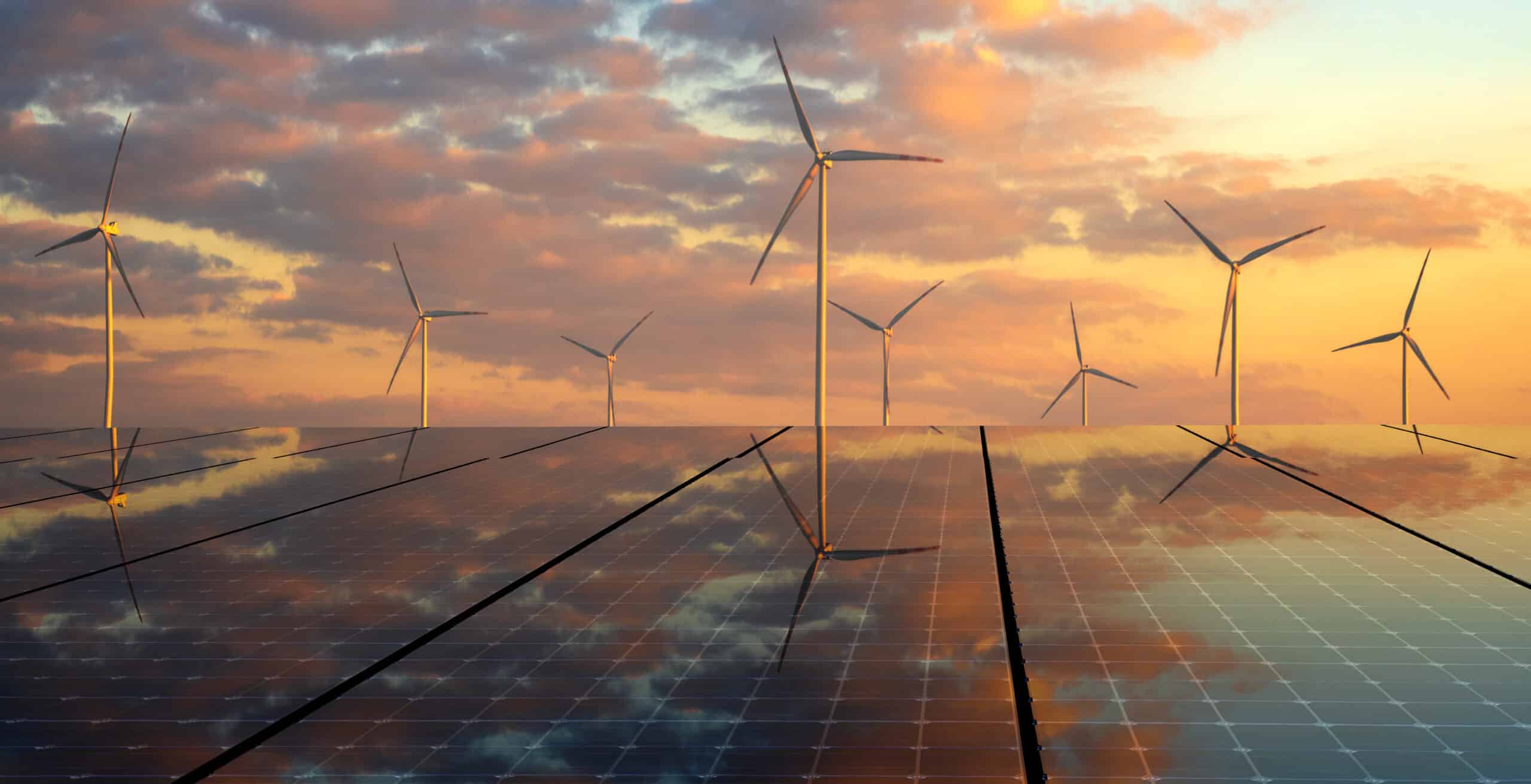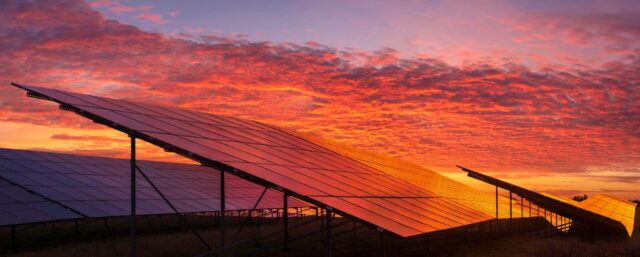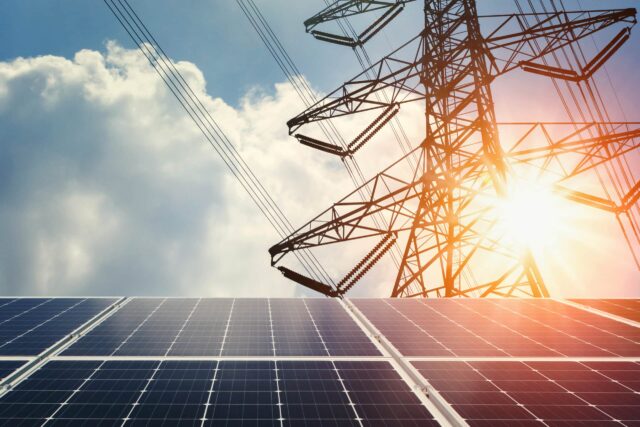In Australia, renewable energy sources are becoming pivotal to the nation’s energy mix, and solar panels play a central role in this transformation. Your understanding of solar panel efficiency is critical, considering it directly influences the energy production and return on investment of your solar system. Efficiency is a measure of a solar panel’s ability to convert sunlight into electricity—the higher the solar cell efficiency is, the more power is generated per square metre of panel surface area.
Climatic conditions in Australia are conducive to solar power generation, but several factors can affect a panel’s efficiency rating. These include the type of solar cells used, the panel’s placement and orientation, and the environmental conditions such as temperature and shading. Manufacturers are continuously improving solar technology, striving for higher efficiency rates to maximise energy production in various conditions. As a consumer, it’s essential to be informed about these advancements and how they can impact the performance of your solar system.
Selecting the right solar panels for your home or business is a nuanced decision that involves an assessment of your energy needs, local climate patterns, and economic considerations. By choosing high-efficiency panels and optimising their installation, you can ensure that your solar system functions as effectively as possible, contributing to both economic savings and environmental sustainability.
Key Takeaways
- Solar panel efficiency is a key determinant in the performance and economic return of solar systems in Australia.
- Factors such as cell technology, panel placement, and environmental conditions influence the efficiency and effectiveness of your solar panels.
- Investing in high-efficiency solar panels and optimising their installation can yield significant benefits for both your wallet and the environment.
Understanding Solar Panel Efficiency
Solar panel efficiency is pivotal to maximising the energy you can harness from the sun’s power. In Australia, where sun exposure is abundant, understanding the nuances of panel performance becomes even more critical to optimise your investment.
Fundamentals of Solar Panel Efficiency
Solar panel efficiency relates to the capacity of a panel to convert sunlight into usable electricity. It is described as a percentage, typically ranging from 15 to 20% for most commercial panels. Cell efficiency plays a crucial role here, determining how much of the sunlight received by a solar cell is converted into usable energy.
Factors Influencing Efficiency
Several factors contribute to the overall efficiency of solar panels. First and foremost is the type of solar cells used; monocrystalline cells are often more efficient than polycrystalline ones. The quality of materials and the manufacturing process also impact module efficiency. You must consider the operating temperature, as most efficient solar panels have an optimal temperature range for peak performance.
Additionally, the configuration of your solar system, including the type of inverter, can affect the conversion efficiency, translating sunlight to electricity for your use. In Australia’s often harsh climate, it’s vital your setup can endure extreme conditions without compromising on efficiency.
Technology Behind Solar Panels
As you consider the potential of solar energy for your home or business in Australia, understanding the technology that drives solar panels is key. From the materials used to the innovations spearheading efficiency improvements, there’s a lot to know.
Types of Solar Cells
The efficiency of your solar panels largely depends on the type of solar cells they contain. The most common types are mono-crystalline, polycrystalline, and thin-film cells.
Mono-crystalline cells are made from a single, pure crystal structure and are identified by their uniform dark colour and rounded edges. They offer the highest efficiency rates because they are made from high-purity silicon, which makes them a popular choice, albeit at a higher price point.
Polycrystalline solar cells, on the other hand, are created by melting multiple silicon fragments together. They have a bluish hue and a speckled reflective appearance. While they are more cost-effective, their efficiency is generally lower compared to mono-crystalline solar cells.
Lastly, thin-film solar cells are made by layering one or several thin layers of photovoltaic material onto a substrate. This type of cell is flexible, lighter, and less costly in terms of materials; however, it also generally has lower efficiency levels.
Installation and Environmental Factors
When considering the efficiency ratings of your solar system, it’s vital to take into account the specific installation parameters and environmental conditions present in Australia. These influences can significantly affect the overall performance of your solar panels.
Optimal Placement and Orientation
The placement and orientation of your solar panels are crucial for maximising energy production. Ideally, in Australia, your panels should face north for optimal sunlight exposure. The angle of roof tilt is also important, as it should match the latitude of your installation to capture the maximum amount of irradiance year-round. The slightest deviation from the optimal inclination or direction can cause a noticeable difference in the energy efficiency, of your system.
Impact of Weather and Climate
Your solar panels operate most efficiently at certain ambient temperatures, and excessive heat can reduce their efficiency. In the varied Australian climate, solar panel efficiency is impacted by local weather conditions. On clear days, with high sunlight levels, your panels will perform at their peak. Conversely, shading from clouds or nearby obstacles, as well as dust or debris, can reduce the effectiveness. It’s also worth noting that areas that experience high levels of irradiance like Western Australia are likely to yield higher energy production, provided the panels are kept at an ideal temperature. Regular cleaning and maintenance by professionals like Solar Repairs can help maintain efficiency throughout the fluctuations of the Australian seasons.
Maximising Energy Production
To ensure you’re getting the most out of your solar PV system, it’s critical to focus on both maximising energy production and ensuring efficient energy utilisation.
Enhancing Solar Panel Output
Your solar panels are the heart of your solar PV system, converting sunlight into electricity. However, their performance can vary with temperature changes. On especially hot days, solar panels can experience a decline in output. For every degree over 25°C, you could see a reduction in efficiency between 0.21% to 0.52%, which proves significant during heat waves. By selecting solar panels with a lower temperature coefficient, you can maintain a higher level of efficiency even on Australia’s hottest days.
An inverter converts the DC electricity generated by your solar panels into usable AC electricity for your home. Using micro-inverters, which are attached to individual solar panels, can maximise energy production as they optimise the output of each panel, rather than a string inverter which optimises the output of a string of panels. This is especially helpful if your solar panels are subject to shading or if they are oriented in multiple directions.
Efficient Energy Utilisation
Once you’ve maximised the energy produced by your solar panels, the next step is ensuring the electricity generated is utilised efficiently. An important aspect of this is the solar inverter’s efficiency which determines how much of the generated DC power is converted into usable AC power. The higher the inverter efficiency, the more usable electricity for your home or business.
Regular maintenance is also crucial to ensure your solar PV system operates at peak efficiency. This includes cleaning the panels to remove dust and debris and having periodic checks done by professionals. Getting your solar panel system checked and maintained by experienced technicians, such as those from Solar Repairs in Western Australia, ensures that any potential issues can be identified and rectified, thus preventing losses in energy production and maintaining efficient energy utilisation.
Economic and Environmental Benefits
Solar panels are more than just devices on your roof; they’re investments in your financial stability and the planet’s sustainability. Through smart technology and effective design, these solar systems are reshaping the way you interact with energy.
Reducing Electricity Bills and Carbon Footprint
Your decision to switch to solar can dramatically reduce your electricity bills. With the sunlight your panels absorb, you’ll generate your own electricity and decrease your reliance on the grid. This self-consumption of solar power is particularly cost-effective; not only are you saving money on your bills, but you’re also reducing your carbon footprint. Solar power is a clean, renewable energy source that, unlike fossil fuels, doesn’t emit greenhouse gases. By opting for solar, you’re directly contributing to a cleaner environment and aiding Australia’s efforts in combating climate change.
Investment and Long-Term Savings
Solar panels should be viewed as a long-term investment rather than an immediate expense. While there’s an upfront cost involved in the installation, solar panels often pay for themselves over time through substantial cost savings. The durability and low maintenance of solar panels, coupled with their long lifespan—usually around 20 to 30 years—mean that your investment is sound and reliable.
Frequently Asked Questions
In your quest to understand solar panel efficiency in Australia, you’re likely to have a few questions. This comprehensive overview will help demystify the factors affecting efficiency, recent advancements, strategies for optimising performance, expected energy output, and determining what makes a high-efficiency solar panel.
What factors determine the efficiency rates of solar panels in Australia?
The efficiency of your solar panels is shaped by numerous elements, such as the technology used, materials quality, operational temperature, the type of inverter, and installation specifics like orientation and tilt angle.
Do solar panels lose efficiency over time?
Yes, solar panels in Australia do lose efficiency over time, typically degrading at a rate of about 0.5% to 1% per year due to exposure to environmental factors like sunlight and temperature changes. This degradation means that after 20 years, a solar panel might retain about 80% to 90% of its initial efficiency. These rates can vary depending on the quality of the panels and the specific environmental conditions they face.
How has solar panel efficiency evolved over time in the Australian climate?
Over the years, continual improvements in photovoltaic technology have led to higher efficiency rates and longevity for solar panels in Australia, even under the unique environmental conditions found here.
What are some effective methods to enhance the performance of solar panels?
You can boost your solar panel performance by ensuring they’re properly maintained, positioned to face north and installed at the ideal tilt. In Australia, the ideal tilt is typically between 20-30 degrees.
On average, how much energy can one expect a solar panel to produce daily in Australia?
The daily energy production of a solar panel will vary depending on factors such as the panel’s size, location, weather, and the time of year. In general, they are designed to meet the average household’s electricity needs.
What constitutes a high-efficiency solar panel rating in the current Australian market?
A solar panel is considered high-efficiency in Australia if it has a rating above the industry standard for solar energy conversion. This contributes to a more considerable amount of electricity production from the same sunlight exposure.




